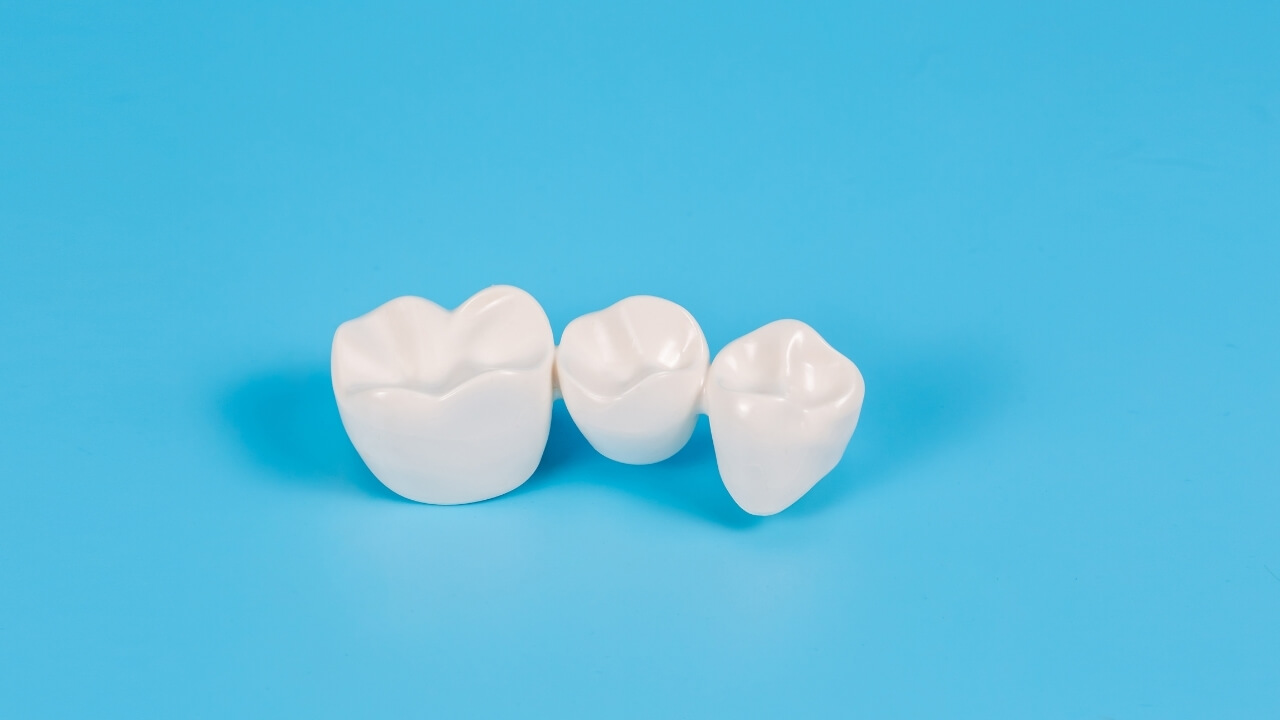Dental Bridges In Clayton
Restore your smile and improve your oral function with dental bridges from Dunstan Dental. Our skilled team provides high-quality, custom-made bridges to fill gaps and enhance your overall dental health.
What Are Dental Bridges?
Dental bridges replace missing teeth. They are fixed prosthetic teeth that literally ‘bridge’ the gap created by missing teeth. They consist of one or more artificial teeth (pontics) held in place by dental crowns on either side.

Types Of Dental Bridges
We offer various types of bridges to find the perfect solution for your dental needs:

Traditional Bridges: This is the most common type of dental bridge. The artificial teeth are attached to natural teeth on both sides of the gap using dental crowns. These are typically made of porcelain fused to metal or ceramics. Dentists use traditional dental bridges when you have healthy natural teeth on both sides of the gap.
Cantilever Bridges: These are less common and are generally only used in areas of your mouth that don’t receive much stress. The artificial teeth are attached using only one crown. Dentists use cantilever bridges when you only have natural teeth on one side of the gap.
Maryland Bridges: A conservative option that uses a metal or porcelain framework bonded to the backs of adjacent teeth. These are often used for front teeth. These artificial teeth aren’t strong enough to withstand the chewing forces of back teeth.
Implant-Supported Bridges: An implant-supported bridge is similar to a traditional bridge, but it’s attached to dental implants instead of natural teeth. Dentists can use implant-supported bridges when you have three or more missing teeth in a row.
Benefits Of Dental Bridges

Restored Smile
Bridges fill gaps, giving you a complete, natural-looking smile.

Improved Function
Enjoy better chewing and speaking abilities.

Facial Structure
Bridges help prevent changes in face shape due to missing teeth.

Protecting Teeth
They prevent other teeth from shifting out of position.

Lasting Solution
With proper care, bridges can last 10-15 years or more.
Our Bridge Procedure
The process varies depending on the type of dental bridge, but generally includes:
1. Preparation
We prep adjacent teeth to support the bridge.
2. Impressions
We take detailed impressions of your teeth to create a custom-fit bridge.
3. Temporary Bridge
A temporary bridge is placed while your permanent bridge is being crafted.
4. Fitting
Once ready, we fit and adjust your permanent bridge to ensure proper fit and comfort.
5. Cementing
The bridge is permanently cemented in place.
Caring For Your Bridge
We recommend the following to ensure the longevity of your bridge:
- Brush twice daily and floss regularly, paying particular attention to the area under the pontic.
- Use a floss threader or interdental brush to clean under the bridge.
- Avoid chewing on hard foods or objects that could damage the bridge.
- Attend regular dental check-ups and cleanings.
Alternatives To Bridges
While bridges are an excellent solution for many patients, we offer alternatives such as dental implants or partial dentures. During your consultation, we’ll discuss all options to find the best solution for your specific needs. You can read more about our dental implant solutions here.



